Dr. Vodder’s Manual Lymph Drainage (MLD) is a groundbreaking technique developed by Dr. Emil Vodder in the 1930s. This gentle, rhythmic method stimulates the lymphatic system to promote detoxification, reduce swelling, and enhance overall well-being. Widely recognized for its holistic approach, MLD has become a cornerstone in both medical and wellness practices, offering benefits for lymphedema, post-surgery recovery, and chronic inflammation. Its versatility and effectiveness make it a valuable tool for improving physical and emotional health.
1.1 What is Manual Lymph Drainage (MLD)?
Manual Lymph Drainage (MLD) is a gentle, non-invasive manual therapy developed by Dr. Emil Vodder. It involves light, rhythmic strokes to stimulate lymph nodes and vessels, aiding detoxification and reducing swelling. By enhancing lymphatic circulation, MLD supports immune function and overall well-being. Unlike mechanical drainage, MLD focuses on manual techniques to restore lymph flow, making it a holistic approach for both therapeutic and preventive care. Its versatility allows application in medical and spa settings, addressing physical, emotional, and psychological health. Proper training ensures safe and effective practice.
1.2 Key Principles of Dr. Vodder’s Technique
Dr. Vodder’s Manual Lymph Drainage is based on gentle, rhythmic strokes that work in harmony with the body’s natural lymphatic flow. The technique emphasizes light, non-invasive pressure to avoid resistance, ensuring the lymphatic system responds effectively. Strokes are applied in a specific sequence, targeting lymph nodes and vessels to enhance circulation. The method prioritizes a holistic approach, addressing physical, emotional, and mental well-being. Proper training is essential to master the technique, ensuring safety and efficacy. These principles form the foundation of MLD, making it a versatile tool for various therapeutic applications.
1.3 Importance of MLD in Modern Healthcare
Manual Lymph Drainage plays a vital role in modern healthcare by addressing lymphatic system dysfunction, which is linked to various chronic conditions. Its effectiveness in managing lymphedema, reducing post-surgical swelling, and aiding detoxification makes it indispensable. MLD also supports immune function and promotes overall well-being, offering a non-invasive alternative to traditional treatments. Its integration into holistic care plans underscores its importance in contemporary medicine, providing patients with a safe and natural approach to health restoration and maintenance.

History and Development of MLD
Developed by Dr. Emil Vodder in the 1930s, MLD revolutionized lymphatic care. Its evolution over decades has solidified its role in modern healthcare, addressing diverse conditions effectively.
2.1 The Work of Dr. Emil Vodder
Dr. Emil Vodder, a Danish physician, developed Manual Lymph Drainage (MLD) in the 1930s, pioneering a revolutionary approach to lymphatic care. His technique, characterized by gentle, rhythmic strokes, aimed to enhance lymph flow, aiding detoxification and reducing swelling. Initially met with skepticism, MLD gained recognition for its effectiveness in treating lymphedema and post-surgery recovery. Today, Vodder’s method is integral to modern healthcare, offering benefits in wellness, beauty treatments, and sports recovery. His work continues to inspire practitioners globally, emphasizing the significance of lymphatic health in overall well-being.
2.2 Evolution of MLD Over the Years
Dr. Vodder’s Manual Lymph Drainage (MLD) has evolved significantly since its inception in the 1930s. Initially met with skepticism, MLD gained acceptance as its benefits for lymphedema and detoxification became evident. By the 1960s, it was integrated into medical practices, particularly in post-surgery and oncology care. The 1970s saw standardization of techniques, expanding its use in chronic inflammation and immune support. Today, MLD is a versatile therapy, incorporated into sports recovery, skincare, and holistic wellness. Ongoing research and technological advancements continue to refine its applications, solidifying its role in modern healthcare.
2.3 How Dr. Vodder’s Method Differs from Other Techniques
Dr. Vodder’s Manual Lymph Drainage (MLD) stands out for its gentle, rhythmic, and precise techniques, unlike aggressive or mechanized lymphatic therapies. It avoids the use of tools or machines, relying solely on manual strokes. MLD focuses on stimulating the lymph nodes and vessels in a specific sequence, enhancing the body’s natural detoxification process. This approach minimizes discomfort and ensures safety, making it suitable for sensitive conditions. Its emphasis on pressure and direction distinguishes it from other methods, offering a holistic and effective way to balance the lymphatic system, promoting both physical and emotional well-being effectively.
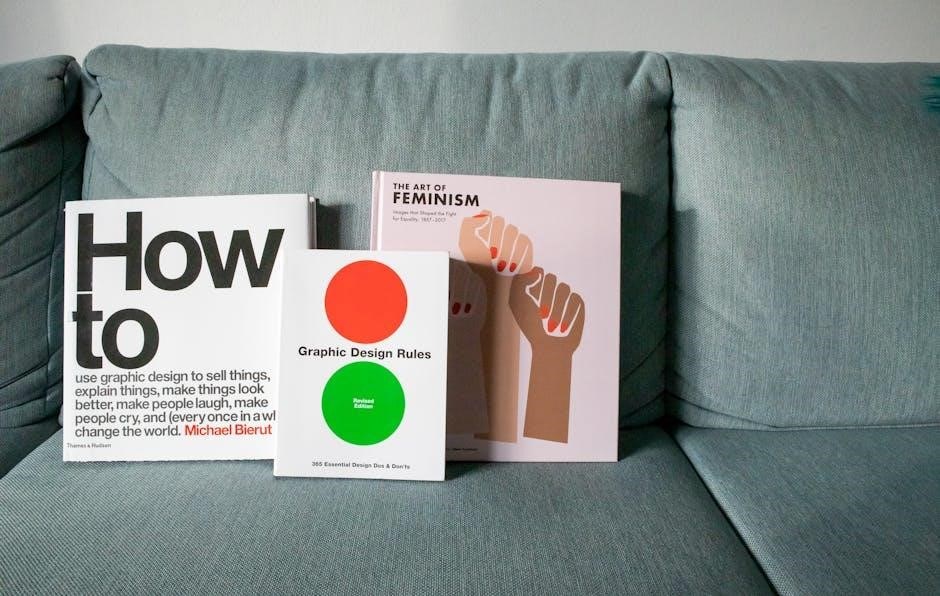
Benefits of Manual Lymph Drainage
Manual Lymph Drainage (MLD) improves lymphatic circulation, reducing swelling and supporting immune function. It aids in detoxification, enhances skin health, and promotes overall well-being.
3.1 Physical Benefits of MLD
Manual Lymph Drainage (MLD) offers numerous physical benefits, including reduced swelling and inflammation, improved circulation, and enhanced detoxification. It alleviates lymphedema, eases chronic pain, and supports post-surgical recovery by minimizing edema. MLD also promotes wound healing, reduces scar tissue, and enhances skin health. By stimulating the lymphatic system, it aids in the removal of toxins, boosting the immune system. Regular sessions can improve mobility, reduce fatigue, and even support venous insufficiency. These physical benefits make MLD a versatile and effective therapy for various health conditions, contributing to overall well-being and quality of life.
3.2 Emotional and Psychological Benefits
Manual Lymph Drainage (MLD) provides profound emotional and psychological benefits, fostering deep relaxation and reducing stress. The gentle, rhythmic strokes can lower anxiety levels and promote a sense of calm. Many individuals experience improved mood and enhanced emotional well-being due to the release of endorphins during sessions. MLD also encourages mindfulness and self-care practices, helping individuals connect with their bodies on a deeper level. This therapeutic approach not only heals physically but also nurtures mental health, offering a holistic path to overall wellness and emotional balance.
3.3 Long-Term Health Improvements
Regular practice of Manual Lymph Drainage (MLD) can lead to significant long-term health improvements; By enhancing lymphatic circulation, MLD supports the body’s natural detoxification processes, boosting immune function and reducing chronic inflammation. Over time, this can result in improved overall health, enhanced energy levels, and a stronger resilience to illness. Additionally, consistent MLD practice may improve skin health, reduce scarring, and promote better digestion. These benefits underscore the value of incorporating MLD into a long-term wellness routine for sustained physical and mental well-being.
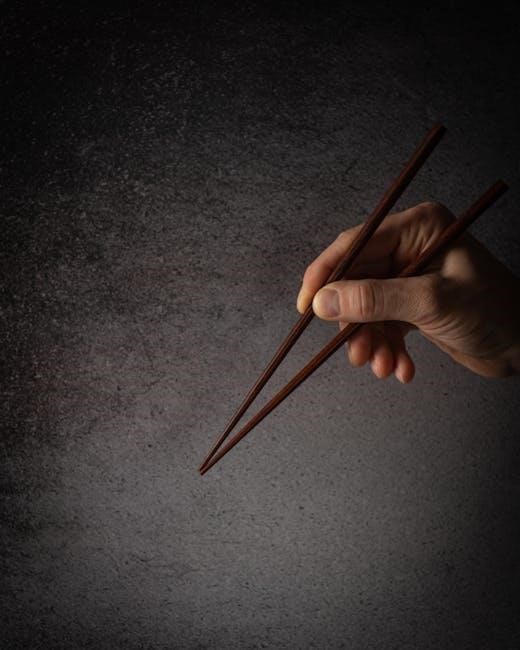
Techniques and Procedures
Manual Lymph Drainage involves light, rhythmic strokes to stimulate lymph flow. Techniques focus on gentle pressure, direction-specific movements, and targeting lymph nodes to enhance detoxification and circulation.
4.1 Basic MLD Techniques for Beginners
Basic MLD techniques involve gentle, light strokes that mimic the natural movement of lymph fluid. Beginners should start with light pressure, using the fingertips to perform slow, rhythmic movements. It’s essential to work in the direction of lymph flow, typically toward the nearest lymph nodes. Focus on key areas like the neck, armpits, and abdomen. Proper breathing and relaxation are crucial for effectiveness. Practicing on oneself or a willing partner can help build familiarity and confidence in the technique. Consistency and patience are key to mastering these foundational skills.
4.2 Advanced Techniques for Licensed Practitioners
Advanced MLD techniques involve specialized strokes and pressure adjustments tailored to specific conditions. Licensed practitioners use intricate methods like lymphomatic and subderic techniques to target deep lymphatic vessels. These techniques require precise knowledge of lymph node locations and fluid dynamics. Advanced practitioners may incorporate tools like soft brushes or manual vibrators to enhance efficacy. Complex sequences are designed to address severe lymphedema, scar tissue, or post-surgical swelling. Mastery of these techniques demands extensive training, hands-on experience, and a deep understanding of individual client needs. Precision and adaptability are key to achieving optimal results.
4.3 Specialized Applications of MLD
Manual Lymph Drainage is applied in various specialized contexts, including post-surgical recovery, chronic inflammation, and immune system support. It is particularly effective in managing lymphedema, reducing scar tissue, and aiding detoxification. Advanced practitioners use MLD to address complex conditions like fibromyalgia and chronic fatigue. Additionally, MLD is integrated into skincare routines to enhance beauty treatments and promote collagen production. Its adaptability makes it a valuable therapy for diverse health and wellness needs, ensuring personalized care for each client’s unique condition.
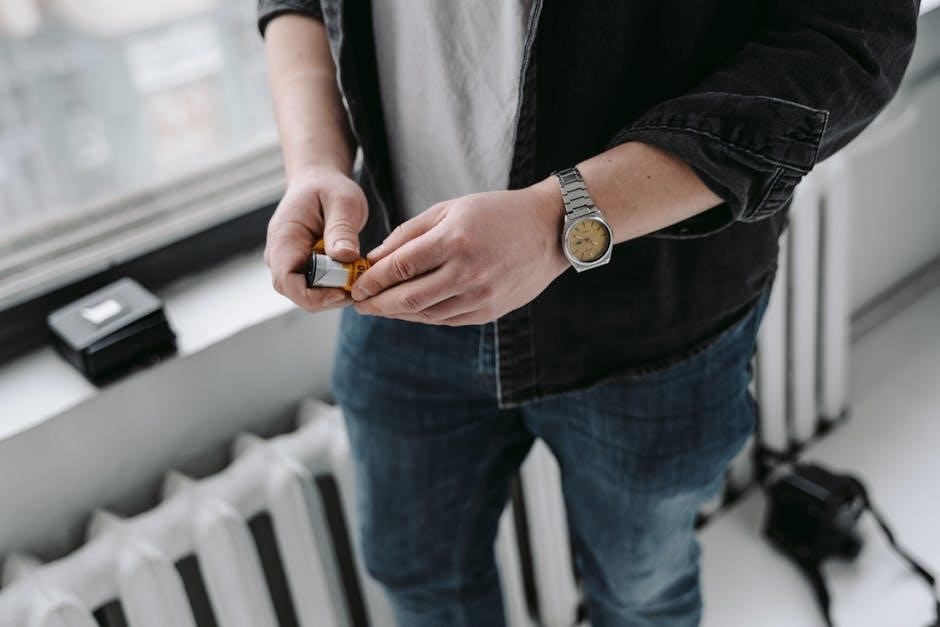
Safety and Contraindications
MLD is generally safe but contraindicated in acute infections, severe heart failure, or active cancer. Precautions are essential to avoid complications and ensure effective treatment outcomes.
5.1 Conditions Where MLD is Not Recommended
Manual lymph drainage (MLD) is not recommended for certain conditions due to potential risks. Acute infections like cellulitis should avoid MLD to prevent spreading infection. Severe heart failure may be exacerbated by increased lymph flow. MLD is contraindicated in acute cancer with metastasis risk to avoid spreading cancer cells. Recent lymph node removal, such as post-mastectomy, requires caution. Pregnancy complications like placenta previa also necessitate avoidance. Consult a healthcare professional before MLD if these conditions apply.
- Acute infections (e.g., cellulitis)
- Severe heart failure
- Acute cancer with metastasis risk
- Recent lymph node removal
- Pregnancy complications (e.g., placenta previa)
5.2 Precautions for Safe Practice
To ensure safe and effective MLD practice, certain precautions must be observed. Only certified practitioners should perform the technique to avoid improper application. Sanitation and hygiene are crucial to prevent infections. Clients should provide full medical history to tailor sessions appropriately. Gentle pressure must be used to avoid damaging lymph vessels. Open wounds, active cancer sites, or implanted medical devices should be avoided. Clear communication during sessions helps adjust techniques for comfort and safety. These precautions ensure MLD is both beneficial and risk-free.
- Use only certified practitioners.
- Maintain proper sanitation.
- Assess medical history.
- Apply gentle pressure.
- Avoid sensitive or injured areas.
5.3 Risks and Side Effects
While generally safe, MLD may pose risks if not performed correctly. Common side effects include temporary fatigue, headaches, or mild nausea due to toxin release. Improper technique can cause bruising or increased swelling. Severe complications, such as lymph vessel damage, are rare but possible. MLD should not be performed on individuals with acute infections or certain medical conditions without professional guidance. Adhering to proper protocols minimizes risks, ensuring a safe experience.
- Fatigue or dizziness.
- Headaches or nausea.
- Bruising or discomfort.
- Temporary increased swelling.
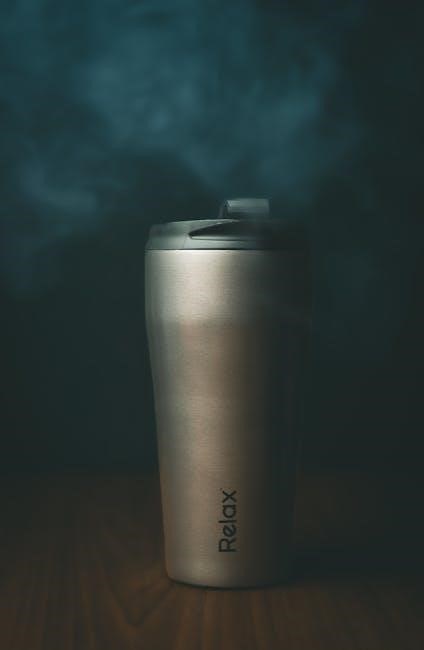
Common Conditions Treated by MLD
MLD effectively addresses lymphedema, chronic swelling, and inflammation. It aids in detoxification, supports immune function, and enhances recovery from surgeries or sports injuries, promoting overall well-being.
- Lymphedema management.
- Chronic inflammation reduction.
- Detoxification support.
6.1 Lymphedema Management
Dr. Vodder’s Manual Lymph Drainage is a highly effective therapy for managing lymphedema, a chronic condition characterized by excessive swelling in limbs or body parts. By gently stimulating the lymphatic system, MLD helps reduce swelling, improve circulation, and promote the removal of excess fluids. This technique is particularly beneficial for patients with primary or secondary lymphedema, offering a non-invasive and comforting approach to enhance mobility and overall comfort. Regular MLD sessions can significantly improve the quality of life for individuals with this condition.
6.2 Chronic Swelling and Inflammation
Manual Lymph Drainage is highly effective in addressing chronic swelling and inflammation by enhancing lymphatic circulation. This technique gently stimulates the lymph nodes, facilitating the removal of excess fluids and proteins that contribute to swelling. Regular MLD sessions can reduce inflammation, alleviate pain, and restore tissue health. It is particularly beneficial for individuals with chronic conditions, post-trauma swelling, or inflammation-related disorders. By promoting proper lymphatic function, MLD helps the body achieve a balanced state, reducing the risk of prolonged inflammation and associated complications.
6.3 Detoxification and Immune Support
Manual Lymph Drainage plays a crucial role in detoxification by stimulating the lymphatic system, which acts as the body’s primary detox pathway. By enhancing lymph flow, MLD helps remove toxins, metabolic waste, and pathogens more efficiently. This not only supports immune function but also reduces the burden on the body’s filtration systems. Regular sessions can boost the immune system, improving its ability to combat infections and maintain overall health, making MLD a valuable practice for those seeking natural detoxification and immune-enhancing benefits.

Practical Applications and Uses
Dr. Vodder’s MLD is versatile, enhancing recovery, wellness, and beauty. Common uses include post-surgery rehabilitation, sports injury recovery, and skincare treatments, benefiting diverse populations seeking optimal health.
7.1 Post-Surgery Recovery
Dr. Vodder’s Manual Lymph Drainage (MLD) is highly beneficial for post-surgery recovery, reducing swelling and pain while promoting healing. By gently stimulating the lymphatic system, MLD helps remove excess fluids and toxins, minimizing the risk of complications like seromas or hematomas. It also enhances circulation, supporting tissue repair and immune function. Many patients find MLD comforting, as it eases discomfort and stress post-operatively. This technique is particularly effective for surgeries involving lymph node removal or areas prone to swelling, such as breast, abdominal, or orthopedic procedures.
7.2 Sports and Fitness Recovery
Dr. Vodder’s Manual Lymph Drainage (MLD) is increasingly used in sports and fitness recovery to reduce muscle soreness, inflammation, and improve circulation. By enhancing lymphatic flow, MLD helps remove metabolic waste and excess fluids, accelerating the body’s natural healing process. Athletes benefit from faster recovery, reduced muscle tension, and improved range of motion. MLD also supports immune function, minimizing the risk of overtraining-related illnesses. Its gentle, non-invasive nature makes it an ideal complement to traditional recovery methods, promoting optimal physical performance and long-term wellness for athletes of all levels.
7.3 Skincare and Beauty Treatments
Dr. Vodder’s Manual Lymph Drainage (MLD) has become a popular addition to skincare and beauty treatments, offering numerous benefits for the skin. By stimulating lymphatic circulation, MLD helps reduce puffiness, improve skin tone, and promote detoxification. It enhances blood flow, boosting collagen production and giving the skin a radiant appearance. Regular MLD sessions can also reduce acne, improve elasticity, and minimize pore size. Many spas and clinics incorporate MLD into facials and body treatments, making it a sought-after procedure for those seeking natural, non-invasive beauty solutions tailored to various skin concerns and types.

Training and Certification
Dr. Vodder’s MLD training and certification programs are structured to ensure practitioners master the technique. These programs combine hands-on training with theoretical knowledge, enabling professionals to safely and effectively apply MLD in clinical and therapeutic settings.
8.1 Finding a Qualified MLD Practitioner
To ensure effective treatment, it’s crucial to find a certified MLD practitioner. Look for professionals with credentials from recognized institutions, such as the Dr. Vodder School or similar reputable organizations. Verify their experience in specific conditions like lymphedema or post-surgery recovery. Online directories, referrals from healthcare providers, or reviews from past clients can help identify skilled practitioners. Always prioritize certification and practical experience to guarantee safe and competent care.
8.2 Courses and Certification Programs
Reputable institutions, such as the Dr. Vodder School, offer comprehensive MLD certification programs. These courses combine theoretical knowledge with hands-on training, ensuring proficiency in the technique. Participants learn lymphatic anatomy, drainage sequences, and contraindications. Programs cater to healthcare professionals, therapists, and estheticians, providing a deep understanding of MLD applications. Certifications are awarded upon successful completion, enabling practitioners to confidently apply the method in clinical or wellness settings. These programs vary in duration and intensity, ensuring a thorough education in Dr. Vodder’s original methodology;
8.3 Continuing Education for Practitioners
Continuing education is essential for MLD practitioners to refine their skills and stay updated on advancements. Workshops, seminars, and online courses are widely available, offering in-depth exploration of specialized techniques. These programs often include hands-on sessions and case studies to enhance practical knowledge. Regular professional development ensures practitioners remain proficient in Dr. Vodder’s methodology, adapt to new research, and deliver optimal results for clients. Such opportunities also foster networking and collaboration within the MLD community, promoting a culture of continuous learning and excellence in practice.
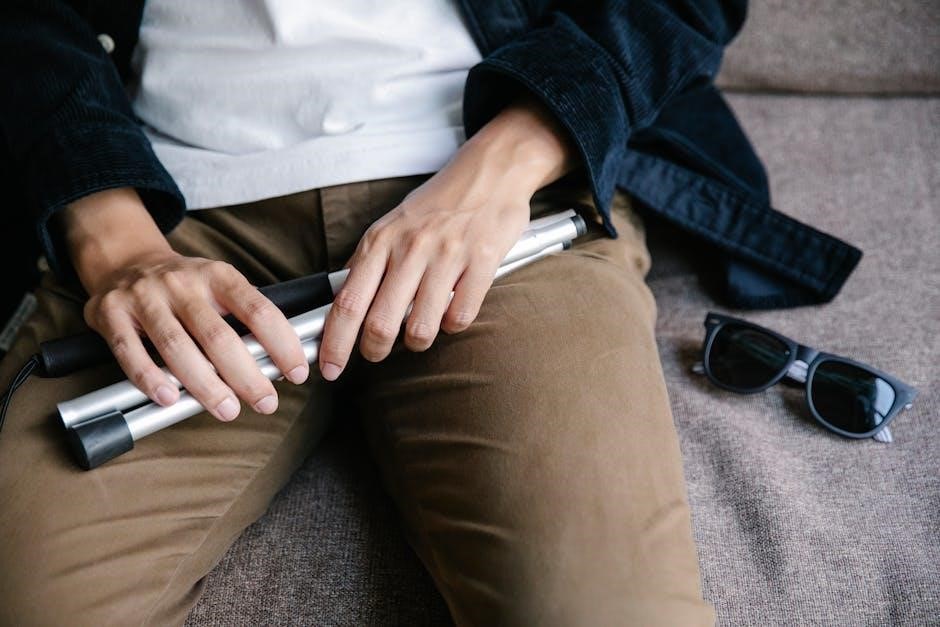
Tools and Equipment
MLD requires minimal equipment, with gloves and specialized creams often used to reduce friction and enhance the glide of manual techniques, ensuring effective lymphatic stimulation.
9.1 Essential Tools for MLD Practice
The practice of Manual Lymph Drainage requires minimal equipment, emphasizing technique over tools. Essential items include soft, non-latex gloves to ensure gentle skin contact and hypoallergenic lubricants to reduce friction. A comfortable, adjustable massage table is crucial for proper client positioning. Some practitioners also use drainage brushes or soft, flexible paddles to enhance lymph flow. These tools are selected for their ability to support the delicate, rhythmic strokes central to Dr. Vodder’s method, ensuring safety and effectiveness during sessions.
9.2 How to Choose the Right Equipment
Selecting the right equipment for MLD involves prioritizing quality, comfort, and functionality. Opt for tools made from durable, non-porous materials that are easy to sanitize. Consider the size and shape of tools, ensuring they suit various body areas. Consider the reputation of the brand and whether the equipment is certified for professional use. Additionally, assess the ergonomic design to ensure comfort during prolonged sessions. Cost and longevity are also important factors to evaluate. Always choose tools that align with your training and the specific needs of your clients.
9.3 Maintenance and Hygiene Practices
Proper maintenance and hygiene are essential for MLD tools to ensure safety and effectiveness. Clean and sanitize tools after each use with alcohol or a medical-grade disinfectant. Store equipment in a dry, protective case to prevent damage or contamination. Follow manufacturer guidelines for care and replacement. Regularly inspect tools for wear and tear, replacing them as needed. Use disposable elements like gloves or drapes to maintain hygiene during sessions. Documenting maintenance routines ensures accountability and prolongs the lifespan of your equipment, keeping it in optimal condition for consistent results.
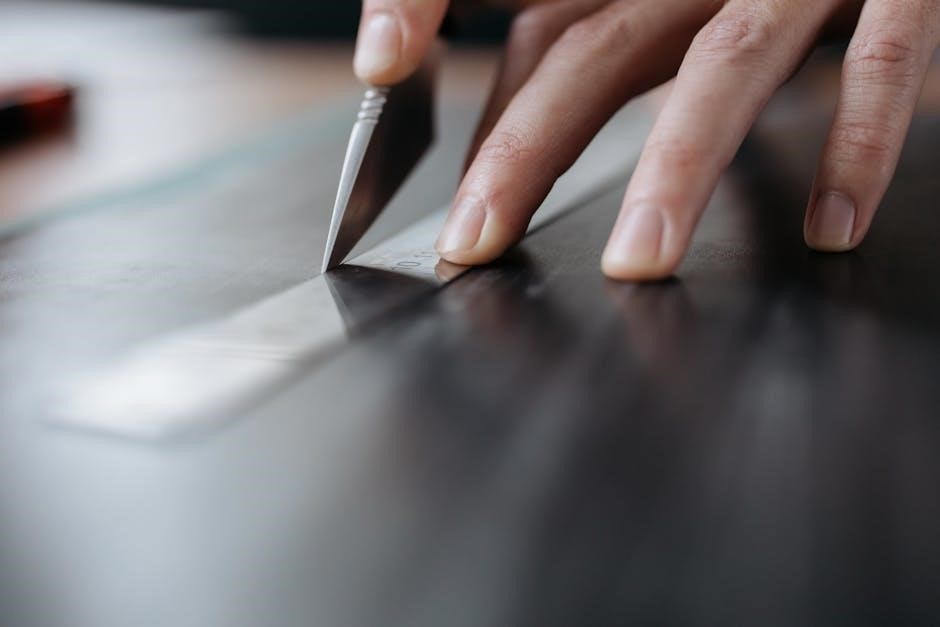
Aftercare and Self-Care
Proper aftercare and self-care routines enhance MLD benefits. Rest, hydration, and avoiding strenuous activities are recommended. Monitor for swelling or pain and adjust habits to support lymphatic health.
10.1 Immediate Post-Session Care
After an MLD session, it’s crucial to stay hydrated to flush out toxins. Rest is recommended to allow the lymphatic system to function optimally. Avoid strenuous activities for a few hours. Monitor for any adverse reactions, such as dizziness or nausea, and consult your practitioner if concerns arise. Use search engines to find reliable post-session care resources or guides, ensuring you follow evidence-based advice tailored to your needs. Proper care enhances treatment benefits and supports overall well-being, making it a vital step in your MLD journey.
10.2 Long-Term Self-Care Practices
Long-term self-care after MLD involves maintaining a healthy lifestyle to support lymphatic function; Regular hydration, a balanced diet rich in antioxidants, and moderate exercise are essential. Incorporate stress-reducing activities like meditation or yoga to enhance lymph flow. Avoid tight clothing that may restrict lymphatic pathways. Use search tools to explore tailored self-care routines and resources, ensuring you adopt practices that align with your specific needs. Consistency in these habits helps sustain the benefits of MLD, promoting long-term wellness and immune support.
10.3 Lifestyle Modifications for Optimal Results
Adopting specific lifestyle changes can amplify the effects of MLD. Prioritize a diet low in processed foods and high in fruits, vegetables, and lean proteins to reduce inflammation. Regular, moderate exercise, such as swimming or walking, supports lymphatic circulation. Avoid prolonged periods of sitting and ensure good posture to prevent lymphatic stagnation. Manage stress through mindfulness practices, as high stress levels can impair lymphatic function. Using search engines, you can find detailed guides on lifestyle adjustments tailored to enhance MLD benefits, ensuring a comprehensive approach to your health.
Dr. Vodder’s MLD stands as a testament to holistic healing, offering profound benefits for physical and emotional well-being. Its future in healthcare is promising, encouraging further exploration.
11.1 Summary of Key Points
Dr. Vodder’s Manual Lymph Drainage (MLD) is a revolutionary technique enhancing lymphatic function, aiding detoxification, and reducing swelling. It is widely applied in lymphedema management, post-surgery recovery, and chronic inflammation. MLD promotes physical and emotional well-being, supported by certified practitioners. Its gentle, rhythmic strokes make it suitable for diverse conditions, from sports recovery to skincare. Proper training ensures safe and effective practice, making MLD a valuable tool in modern healthcare for improving overall health and quality of life.
11.2 The Future of MLD in Healthcare
Dr. Vodder’s Manual Lymph Drainage is poised to play a growing role in modern healthcare, with increasing recognition of its benefits for lymphatic health and overall well-being. Advances in research and training are expected to expand its applications, integrating MLD with other therapies for enhanced patient outcomes. The rise of holistic medicine and personalized care further highlights MLD’s potential as a versatile and non-invasive treatment. As awareness grows, MLD is likely to become a standard practice in hospitals, clinics, and wellness centers, offering long-term solutions for chronic conditions and preventive care.
11.3 Encouragement for Further Exploration
Exploring Dr. Vodder’s Manual Lymph Drainage further can open doors to enhanced well-being and therapeutic possibilities. By delving into its principles and applications, individuals can gain a deeper understanding of lymphatic health and its role in overall wellness. Encouraging further exploration involves consulting certified practitioners, engaging in self-care practices, and staying informed about the latest research. Embracing MLD as a holistic approach can empower individuals to take an active role in their health, fostering a balanced and vibrant lifestyle. The journey of discovery is both rewarding and transformative.